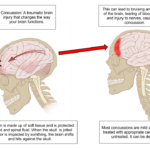
5 Most Effective Exercises for ACL Injuries
UNLOCKING ACL INJURY PREVENTION:
Anterior Cruciate Ligament (ACL) injuries are common among athletes and individuals engaged in physical activities that involve sudden stops, changes in direction, or pivoting movements. These injuries can have significant consequences, including pain, instability, and long-term functional limitations.
While complete prevention of ACL injuries may not be possible, targeted exercises and training programs can help reduce the risk of injury and improve overall knee stability. In this comprehensive guide, we’ll explore the five most effective exercises for ACL injury prevention, providing insights into their biomechanical principles, benefits, and practical applications.
SQUATS:
Squats are a fundamental lower body exercise that targets the quadriceps, hamstrings, glutes, and core muscles while also promoting knee stability and alignment. When performed correctly, squats help strengthen the muscles surrounding the knee joint, including the quadriceps and hamstrings, which play a crucial role in supporting and stabilizing the knee during dynamic movements.
To perform a squat, stand with feet shoulder-width apart, engage the core muscles, and lower the body by bending the knees and hips, keeping the chest upright and the knees aligned with the toes. Aim to lower the body until the thighs are parallel to the ground, then return to the starting position by pushing through the heels and straightening the legs. Start with bodyweight squats and gradually progress to weighted variations as strength and technique improve.
BENEFITS OF SQUATS FOR ACL INJURY PREVENTION:
- Strengthens quadriceps and hamstrings: By targeting the quadriceps and hamstrings, squats help improve knee stability and reduce the risk of ACL injuries.
- Promotes proper alignment and biomechanics: Squats encourage proper knee alignment and movement patterns, which are essential for preventing excessive stress on the ACL.
- Enhances functional strength and performance: Squats mimic the movements involved in many sports and activities, making them an effective exercise for improving functional strength and performance while reducing the risk of injury.
LUNGES:
Lunges are another effective lower body exercise that targets the quadriceps, hamstrings, glutes, and core muscles while also improving balance, coordination, and proprioception. Like squats, lunges help strengthen the muscles surrounding the knee joint and promote proper alignment and stability during dynamic movements.
To perform a lunge, start in a standing position with feet hip-width apart, then step forward with one foot and lower the body until both knees are bent at a 90-degree angle, with the front thigh parallel to the ground. Keep the front knee aligned with the ankle and avoid letting it extend past the toes. Push through the heel of the front foot to return to the starting position, then repeat on the opposite side. Variations of lunges include forward lunges, reverse lunges, walking lunges, and lateral lunges.
BENEFITS OF LUNGES FOR ACL INJURY PREVENTION:
- Strengthens stabilizing muscles: Lunges target the quadriceps, hamstrings, glutes, and core muscles, which play a crucial role in stabilizing the knee joint and preventing ACL injuries.
- Improves balance and proprioception: Lunges challenge balance and proprioception, helping improve joint stability and coordination, which are essential for injury prevention.
- Addresses muscular imbalances: Lunges can help identify and correct muscular imbalances between the left and right sides of the body, reducing the risk of overuse injuries and promoting symmetrical movement patterns.
- Single-Leg Squats:
Single-leg squats, also known as pistol squats, are an advanced lower body exercise that targets the quadriceps, hamstrings, glutes, and core muscles while also improving balance, stability, and functional strength. Single-leg squats are particularly effective for ACL injury prevention because they mimic the unilateral demands of many sports and activities, helping improve symmetry and coordination between the left and right sides of the body.
To perform a single-leg squat, stand on one leg with the other leg extended in front of the body, then lower the body by bending the knee and hip of the standing leg, keeping the chest upright and the knee aligned with the toes. Aim to lower the body until the thigh is parallel to the ground, then return to the starting position by pushing through the heel of the standing foot.
BENEFITS OF SINGLE-LEG SQUATS FOR ACL INJURY PREVENTION:
- Enhances unilateral strength and stability: Single-leg squats target the stabilizing muscles of the hip, knee, and ankle, helping improve unilateral strength and stability, which are essential for preventing ACL injuries.
- Improves balance and proprioception: Single-leg squats challenge balance and proprioception, promoting joint stability and coordination, which are critical for injury prevention during dynamic movements.
- Increases functional strength and athleticism: Single-leg squats translate directly to many sports and activities that involve unilateral movements, helping improve functional strength, agility, and athleticism while reducing the risk of injury.
PLYOMETRIC EXERCISES:
Plyometric exercises, also known as jump training or plyos, are dynamic movements that involve rapid muscle contractions and explosive force production. Plyometric exercises are effective for ACL injury prevention because they improve neuromuscular control, proprioception, and landing mechanics, which are critical for reducing the risk of non-contact ACL injuries during sports and activities.
Examples of plyometric exercises include jump squats, box jumps, split jumps, and depth jumps. To perform a plyometric exercise, start in a stable position, then explode upwards or forwards using a quick and powerful movement, then land softly and absorb the impact with bent knees and hips to reduce stress on the joints.
BENEFITS OF PLYOMETRIC EXERCISES FOR ACL INJURY PREVENTION:
- Improves neuromuscular control: Plyometric exercises enhance neuromuscular control and coordination, helping athletes react quickly and efficiently to changes in direction and velocity, which are essential for preventing ACL injuries.
- Enhances landing mechanics: Plyometric exercises teach athletes to land softly and absorb impact forces with proper alignment and technique, reducing the risk of ACL injuries during dynamic movements.
- Increases explosive power and athleticism: Plyometric exercises develop fast-twitch muscle fibers and explosive power, improving speed, agility, and athleticism while reducing the risk of injury during high-intensity activities.
BALANCE AND STABILITY EXERCISES:
Balance and stability exercises are essential for ACL injury prevention because they improve proprioception, joint stability, and neuromuscular control, which are critical for maintaining proper alignment and preventing excessive stress on the ACL during dynamic movements.
Examples of balance and stability exercises include single-leg balance, stability ball exercises, Bosu ball exercises, and proprioceptive training drills. To perform balance and stability exercises, start in a stable position and challenge the body’s ability to maintain equilibrium by introducing external perturbations or by performing exercises on unstable surfaces.
BENEFITS OF BALANCE AND STABILITY EXERCISES FOR ACL INJURY PREVENTION:
- Improves proprioception and joint awareness: Balance and stability exercises enhance proprioception and joint awareness, helping athletes maintain proper alignment and control during dynamic movements, which are essential for preventing ACL injuries.
- Strengthens stabilizing muscles: Balance and stability exercises target the stabilizing muscles of the hip, knee, and ankle, improving joint stability and reducing the risk of ACL injuries.
- Enhances dynamic balance and agility: Balance and stability exercises translate directly to sports and activities that involve dynamic movements and changes in direction, helping athletes improve balance, agility, and coordination while reducing the risk of injury.
ACL injuries can have significant consequences for athletes and individuals engaged in physical activities, but targeted exercises and training programs can help reduce the risk of injury and improve overall knee stability.
By incorporating the five most effective exercises for ACL injury prevention—squats, lunges, single-leg squats, plyometric exercises, and balance and stability exercises—athletes and individuals can enhance strength, stability, proprioception, and neuromuscular control, ultimately reducing the risk of ACL injuries and promoting long-term joint health and function.
As with any exercise program, it’s essential to consult with a qualified healthcare professional or physiotherapist before starting a new exercise regimen, especially if you have a history of knee injuries or medical conditions. With a comprehensive approach to ACL injury prevention that includes targeted exercises, proper technique, and gradual progression, individuals can unlock the keys to a healthier, more resilient knee and enjoy a lifetime of active pursuits.





